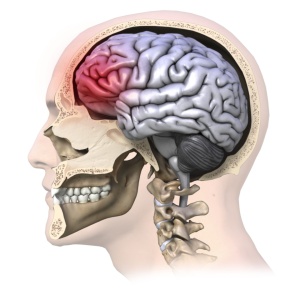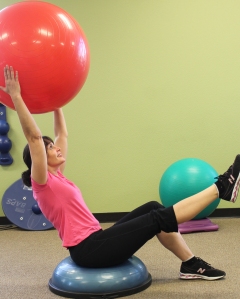Concussions don’t just happen to football players.

All concussions are serious injuries.
(Photo credit: The Physical Therapy Institute http://bit.ly/18Qpw2i )
They can happen to dancers, acrobats, actors, stage crew — anyone.
As backstage PTs, we cover musicals and shows that have more and more acrobatics and risky tricks. Concussions can become more likely.
Any degree of concussion is brain damage; you must treat it as such.
Concussions do not necessarily mean a person has blacked-out or been hit on the head. Concussions can result from any quick stop of the head during motion, such as whiplash.
Learn the signs and symptoms of concussions. Have a high degree of suspicion for them.
Other things to keep in mind:
- Do not ignore any symptoms of concussion, even if they are mild or it’s weeks post-injury.
- Be sure not to return performers to activity too early after a concussion.
- Second Impact Syndrome, post-concussion syndrome and Chronic Traumatic Encephalopathy (CTE) can be caused by untreated or repetitive concussions.
- Any additional trauma to an unhealed brain (including spinning or jumping) can cause Second Impact Syndrome, which results in 50% mortality and 100% disability. This means that if an unhealed concussion is traumatized a second time, even mildly, there will be some form of permanent brain damage (learning disability, chronic headaches, emotional problems, etc).
Listen to this 38 minute story from National Public Radio about concussion consequences suffered by football players years after the injury (listen to the audio playback, since the transcribed text does not contain all the info). These problems are not football-specific; they can plague anyone who suffers a concussion.
Take responsibility to prevent post-concussion syndrome and CTE in your patients. Be aware of concussions from outside events, such as a recent car accident, ski accident, or projects/gigs, that cast and crew may be dealing with.
Your performers could come into work not realizing that their headache from the fender-bender on their day off is a concussion. If they then proceed to jump, spin or fly, they can induce Second Impact Syndrome.
Keep your ears open for rumors of car accidents or recreational falls amongst the cast, and go interview the involved person for signs/symptoms of concussion. Be thorough and persistent. Often, doctors miss those symptoms or dismiss them.
Hint: If the person reacts irritably and out of character to your questions, strongly suspect concussion. Irritability is one of the common symptoms.


